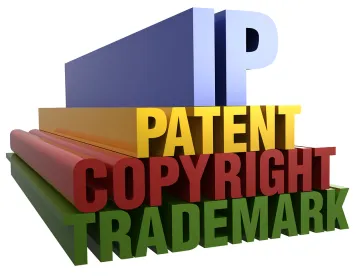In the past two months, the Trademark Trial and Appeal Board has issued three opinions citable as Board precedent. The following is a brief summary of each opinion and its precedential impact.
In re John Michael Brack – Details Matter
At issue in this ex parte appeal was Mr. Brack’s application to register SIMPLY ORANGECELLO for “alcoholic beverage, namely, orange flavored liqueur.” Mr. Brack filed his application electronically via the PTO’s Trademark Electronic Application System but failed to sign or verify the application:
The examining attorney refused registration of the application based on prior registrations of CARAVELLA ORANGECELLO and ORANGECELLO and Mr. Brack’s failure to sign and verify his trademark application per the requirements of 15 U.S.C. §§ 1051(a)(3), 1051(b)(3), and 1126, and requested Mr. Brack’s submission of a declaration curing his failure. Mr. Brack requested the suspension of his prosecution of the application in order to petition to cancel the prior ORANGECELLO registration, which petition was successful by default. However, Mr. Brack did not respond in any fashion to the examining attorney’s finding that the application was deficient for lacking Mr. Brack’s signature and verification. When prosecution of the application was recommenced, the examining attorney finalized her refusal to register the application based on the prior CARAVELLA ORANGECELLO registration and Mr. Brack’s failure to sign and verify his application. Subsequently, Mr. Brack filed a notice of appeal and request for reconsideration, neither of which addressed the procedural deficiencies of his application but, instead, solely focused on the Section 2(d) refusal.
Having received no argument from Mr. Brack regarding his failure to sign and verify his application, the Board was able to elide any discussion of the hotly contested Section 2(d) refusal and affirm the examining attorney’s refusal to register on the procedural issue alone. The Board noted that an applicant’s obligation to sign and submit a written verification in support of its application is an unambiguous statutory requirement of filing an application, and that Mr. Brack failed to cure this deficiency despite repeated requests by the examining attorney. Consistent with 37 C.F.R. § 2.142(g), the Board held that Mr. Brack could not remedy this deficiency after issuance of the appeal decision.
Take Aways: There are no issues too minute or insignificant to address when responding to an office action. Practitioners must be careful to respond to all issues raised by an examining attorney and should not assume that an application’s procedural deficiencies can be remedied after any substantive issues are addressed.
In re Meridian Rack & Pinion – Protecting the “Generic” Mark
In this ex parte appeal, the Board addressed whether applicant Meridian Rack & Pinion’s BUYAUTOPARTS.COM mark was generic for “on-line retail store services featuring auto parts.” Meridian filed its application for registration of the mark on the Principal Register based on use in commerce since May 1, 2001. Initially, the examining attorney refused to register the mark on the grounds that it was descriptive of the services offered thereunder. Meridian amended its application to claim acquired distinctiveness under Section 2(f) and, later, amended its application for registration on the Supplemental Register, but the examining attorney refused registration of the mark on the grounds that it was generic and, thus, incapable of acquiring distinctiveness. Meridian ultimately appealed this refusal.
On appeal, the Board upheld the examining attorney’s finding that BUYAUTOPARTS.COM was generic for “on-line retail store services featuring auto parts” and, thus, was incapable of serving a trademark function. The Board explained that determining whether a mark is generic involves a two-step inquiry: (1) what is the genus of goods or services at issue, and (2) does the relevant public understand the designation primarily to refer to that genus of goods and/or services. With respect to the first inquiry, the Board held that in this case, like most cases, the genus of the services is defined by Meridian’s identification of services, i.e., selling auto parts online. As for the second inquiry, Meridian argued that the term “buy,” as used in its mark, cannot refer to “selling,” as buying and selling actually have opposite meanings. According to Meridian, it “sells auto parts” and its customers “buy auto parts.” The Board did not buy (no pun intended) Meridian’s argument, holding that more than one term may be generic with respect to a particular product or service. Additionally, the Board observed that the “central focus” of retail sales is to facilitate the buying of a product, and that a term naming the “central focus” or “key aspect” of a service is generic for the service itself. Furthermore, the Board cited instances from the examining attorney’s record showing that relevant members of the public use and understand the words “buy auto parts” as referring to and proposing the retail sales of auto parts. Finally, the Board rejected Meridian’s argument that use of the suffix “.com” rendered its mark capable of acquiring distinctiveness, noting that Meridian had disclaimed use of “.com” and, more importantly, that use of “.com” is widely understood to refer to commerce conducted online.
Take Aways: Records of proceedings before the PTO and Board are publicly available and exist forever, so practitioners and clients are wise to consider, prior to seeking registration, the risk of a public finding that a mark is generic. In certain circumstances, it may be wiser to rely on common law rights in a mark instead of risking a public repudiation of said rights.
New York Yankees Partnership v. IET Products and Services, Inc. – Parody Is No Defense
This opposition proceeding pitted the New York Yankees Partnership, the owner of the Major League baseball team of the same name, against IET. The Yankees opposed IET’s applications in Classes 21 and 25 to register THE HOUSE THAT JUICE BUILT on the grounds that it was likely to cause confusion with and dilute its mark THE HOUSE THAT RUTH BUILT. The Yankees also opposed IET’s Class 25 application for the following design mark on the grounds it was likely to cause confusion with and dilute its design mark:
Finally, the Yankees claimed that IET’s marks falsely suggested a connection with the Yankees in violation of 15 U.S.C. § 1052(a).
The Board only addressed the Yankees’ claim for dilution by blurring. To establish a claim for dilution by blurring under 15 U.S.C. § 1125(c), the Yankees had to establish the following: (1) that it owns a famous mark that is distinctive; (2) IET is using a mark in commerce that allegedly dilutes the claimant’s mark; (3) IET began use of its mark after the Yankees’ mark became famous; and (4) IET’s use of its mark is likely to cause dilution by blurring.
The Board had little trouble finding that the Yankees had established the first three elements. Notably, the Board’s finding that both of the Yankees’ marks at issue were famous was based in part on IET’s equivocal admissions, made in response to requests for admission propounded by Yankees, that the marks were famous.
The parties’ battle hinged on the fourth element, i.e., whether IET’s marks are likely to cause dilution by blurring. Dilution by blurring occurs when a substantial percentage of consumers, on seeing the junior party’s use of a mark on its goods, are immediately reminded of the famous mark and associate the junior party’s use with the owner of the famous mark, even if they do not believe that the goods come from the famous mark’s owner. 15 U.S.C. § 1125(c)(B) lists six factors a tribunal may consider in determining whether dilution by blurring is likely.
IET largely conceded that the six factors weighed in favor of the Yankees and that it selected its marks in order to create an association with the Yankees’ marks. Nevertheless, IET argued that its marks were parodies of the Yankees’ marks and, thus, fell under a statutory exclusion excepting from dilution liability “any fair use . . . of a famous mark by another person other than as a designation of source for the person’s own goods or services, including use in connection with . . . identifying and parodying, criticizing, or commenting upon the famous mark owner or the goods and services of the famous mark owner.” 15 U.S.C. § 1125(c)(3). The Board found that this exception cannot apply to inter partes proceedings because a trademark applicant, by definition, seeks to use its mark commercially and “as a designation of source for the person’s own goods or services.” Furthermore, the Board expressly overruled its prior ruling in Research in Motion Ltd. v. Defining Presence Marketing Group Inc., 102 U.S.P.Q.2d 1187 (TTAB 2012) and held that when parody is not available as a safe harbor under 15 U.S.C. § 1125(c)(3), a claim of parody should not be considered as part of the dilution analysis. In sum, the Board refused to countenance any of IET’s arguments related to parody and found its marks likely to dilute the Yankees’ famous marks.
Take Aways: A claim of parody is not a valid exception to a claim of dilution in a TTAB matter. Moreover, it should not be considered by the Board when determining the likelihood of dilution. Also, admitting requests for admission can have real consequences. If a request for admission is not subject to unequivocal admission, in whole or in part, and the respondent does not lose credibility denying it, it generally should be denied.



 />i
/>i




